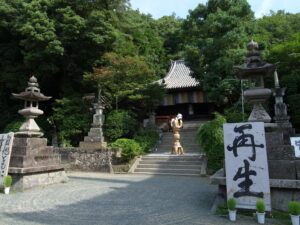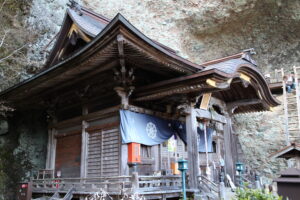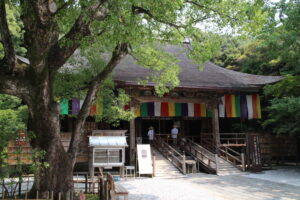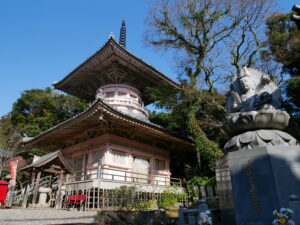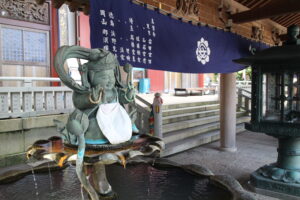With origins stretching back to the earliest days of Buddhism in Japan, Ehime’s Daiho-ji, or “Temple of the Great Treasure,” lives up to its name with ancient legends and serene precincts.
Origins and History of Daiho-ji
Though Daiho-ji is now best-known as one of Kukai’s practice places, its roots reach deep into antiquity, at least in legend. A local hunter, practicing archery on a mossy old tree trunk, noticed golden rays of light shining through the arrow holes. Looking inside the tree, he found a statue of 11-Face Kannon, the Bodhisattva of Compassion. (Learn more about Kannon on Scattered Blossoms, a blog kept by one of our guides, Koei). Though Buddhist teachings hadn’t yet reached the area, the hunter realized he’d found a treasure of great value, and used his bow as a saw to cut grass and branches and wove together a hut to house the sacred image. Inspired by this tale, the emperor Monmu ordered a proper temple built in the year 701, naming it Daiho-ji. The hunter is still venerated as Noguchi Myojin, a divine protector of the shrine and surrounding mountain. Kukai is said to have meditated here in the 9th century, as is Ippen, another beloved Buddhist saint and native of Matsuyama city who lived in the 13th century. Check out The Illustrated Biography of Ippen, a renowned medieval scroll including Ippen’s time at Daiho-ji, at e-Museum. The temple was razed to the ground in the 12th century, but was restored with imperial patronage. At one point there were 48 individual temples on the mountain, with seven halls for resident monks.

What to See at Daiho-ji
Walking up to the temple from the parking lot takes you past a row of staggeringly large cryptomeria trees. At the top of a slope is the temple’s impressive main gate, housing a pair of enormous straw sandals, said to ward off evil spirits. A set of stone steps takes you up to the main hall. Daiho-ji is unusual in that it has two belltowers, one in front of the main hall and one in front of the Daishi hall. Between the two is a recent, but mesmerizing, statue of Kannon, the main deity of the temple. There are a number of stories about how Kannon got 11 Faces, one of which says that her intense compassion for those suffering caused her head to explode. Her boss, a Buddha called Amida, transformed the pieces into 11 heads and gave her 1,000 arms, the better to save all beings. Heading back down the staircase and turning left to pass the (now closed) temple accommodation takes you toward the trailhead for the hike to Temple 45, Iwaya-ji, one of the loveliest of the pilgrimage.
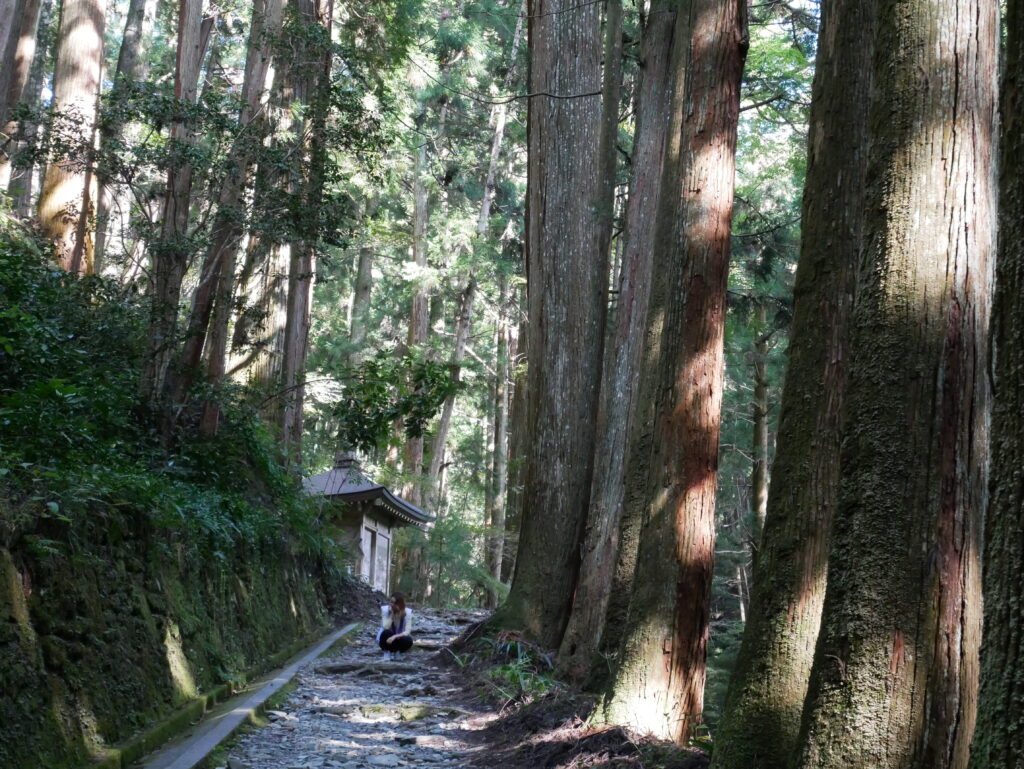
The Road Ahead
As Temple 44 of 88, Daiho-ji stands at the symbolic halfway mark of the Shikoku Pilgrimage—a reminder that every journey has its turning point. Whether you’re exploring a few temples or many, Shikoku Tours’ knowledgeable guide-interpreters will help you connect deeply with each stop along the way.



